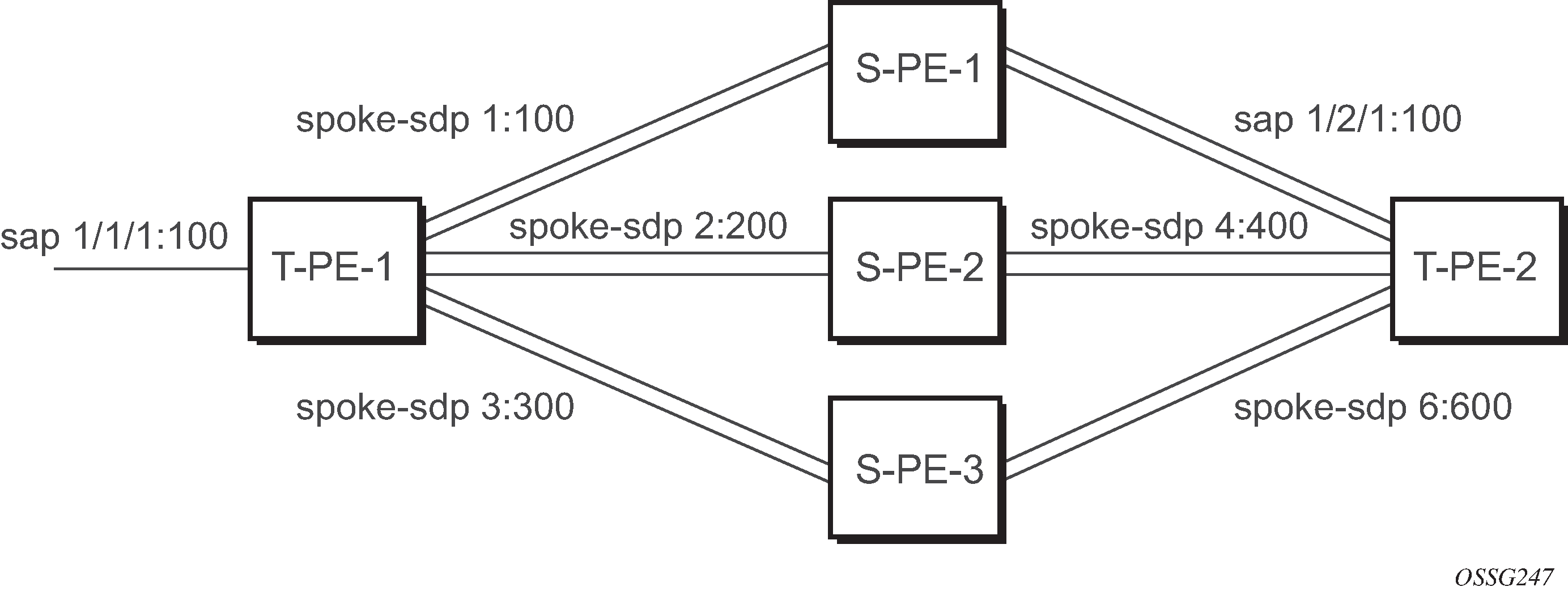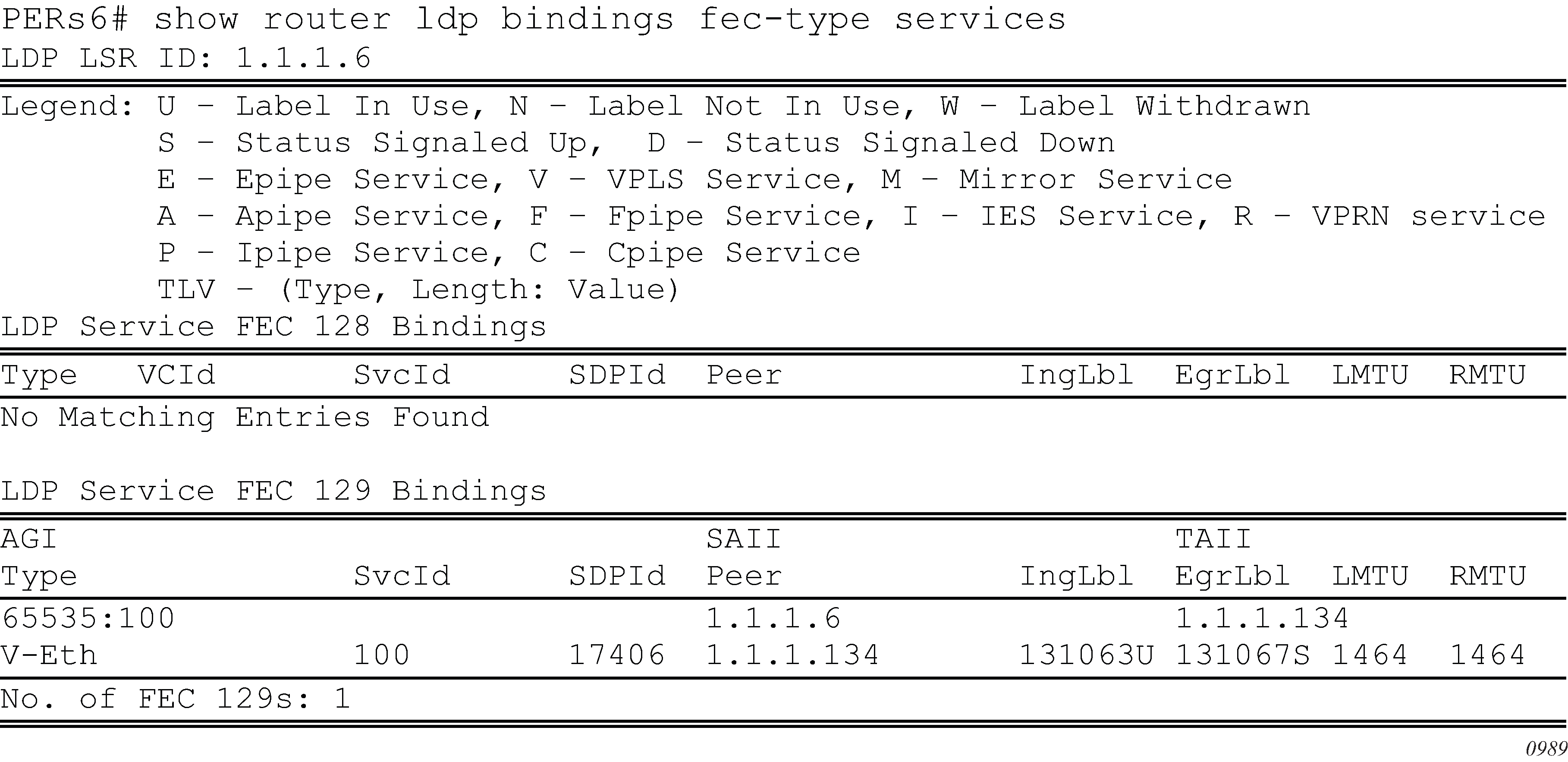T-LDP is triggered when the VPN endpoints have been discovered using BGP. The T-LDP session between the PEs is established when a session does not exist. The far-end IP address required for the T-LDP identification is learned from the BGP AD next hop information. The pw-template and pw-template-binding configuration statements are used to establish the automatic SDP or to map to the appropriate SDP. The FEC129 content is built using the following values:
AGI from the locally configured VPLS-ID
SAII from the locally configured VSI-ID
TAII from the VSI-ID contained in the last 4 bytes of the received BGP NLRI
Figure 1 shows the different detailed phases of the LDP signaling path, post BGP AD completion. It also indicates how some fields can be auto-generated when they are not specified in the configuration.

The following command shows the LDP peering relationships that have been established (see Figure 2). The type of adjacency is displayed in the ‟Adj Type” column. In this case, the type is ‟Both” meaning link and targeted sessions have been successfully established.

The following command shows the specific LDP service label information broken up per FEC element type: 128 or 129, basis (see Figure 3). The information for FEC element 129 includes the AGI, SAII, and the TAII.
